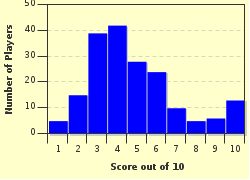Quiz Answer Key and Fun Facts
1. Which (originally) Danish drink is renowned as a 'pick-me-up' in the morning to relieve a hangover or general malaise?
2. We all know Tabasco as a hot pepper sauce which can be used to spice up a huge number of dishes. But where would you find a State with the same name?
3. In which era was the Italian pasta shape Cannelloni invented?
4. A fish product first produced in a Scottish village called Auchmithie. The UK government standard states, and I quote:-
"Hot-smoked, headless and gutted whole haddock processed in accordance with the method of production set out below. In size, they weigh between 350-550 g and are sold in pairs as processed. In colour they are deep golden to mid brown externally, creamy white internally. In texture they are dry on the outside, moist and juicy on the inside with flesh which flakes and removes easily from the bone. They have a very pleasant, mild, fishy flavour with a light smoky taste and slight salt enhancement."
What are they known as?
5. What would you order in a Moscow restaurant if you wanted a dish similar to Swiss Rosti?
6. The ingredient 'Ghee' is widely used for cooking throughout the Indian subcontinent. What is it?
7. The traditional Basque dish 'Txangurro Relleno' is based on which sea creature?
8. The Cantonese name for this sauce is 'geet-jup', but by which name would we know it in the west?
9. We have all heard of and possibly eaten 'farmed fish', the best known being salmon, trout and sea-bass. Which other fish is now being farmed on a commercial scale?
10. Some years ago while working in the Mediterranean area I ordered and was served a Maltese dish of grilled Lampuki. By what other name is the Lampuki known?
Source: Author
twelvebore
This quiz was reviewed by FunTrivia editor
Bruyere before going online.
Any errors found in FunTrivia content are routinely corrected through our feedback system.

